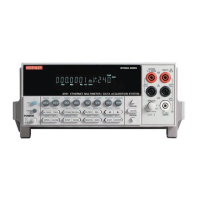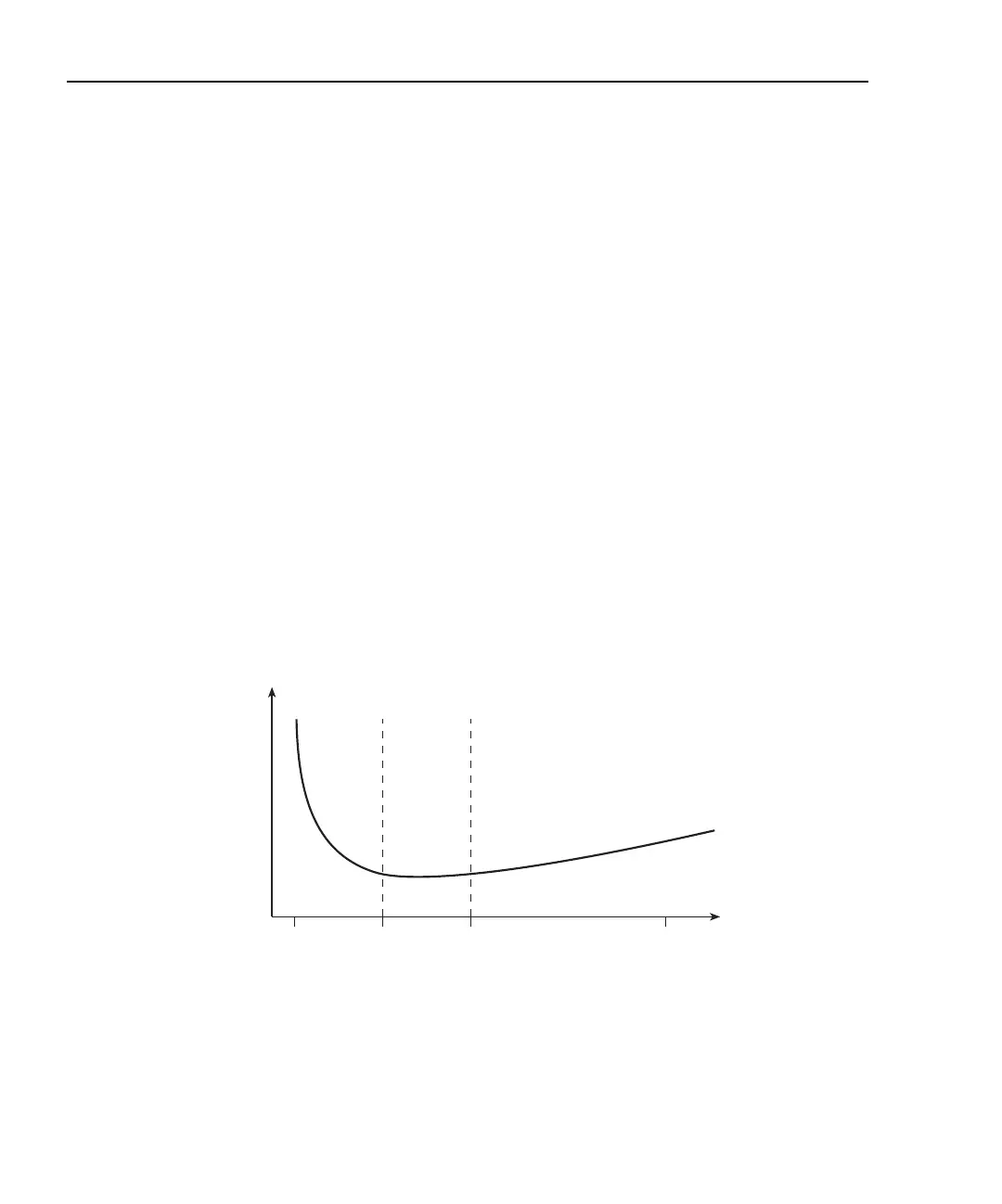4-8 Range, Digits, Rate, Bandwidth, and Filter Model 2701 User’s Manual
Rate and bandwidth
Rate
Setting the rate sets the integration time (measurement speed) of the A/D converter, the
period of time the input signal is measured (also known as aperture). The integration time
affects the amount of reading noise, as well as the ultimate reading rate of the instrument.
The integration time is specified in parameters based on the number of power line cycles
(NPLC), where 1 PLC for 60Hz is 16.67msec (1/60) and 1 PLC for 50Hz and 400Hz is
20msec (1/50).
In general, the fastest integration time (0.1 PLC from the front panel, 0.002 PLC from the
bus) results in increased reading noise and fewer usable digits, while the slowest
integration time (5 PLC from the front panel, 50 PLC from the bus) provides the best
common-mode and normal-mode rejection. In-between settings are a compromise
between speed and noise.
The Model 2701 has a parabola-like shape for its speed vs. noise characteristics and is
shown in Figure 4-1. The Model 2701 is optimized for the 1 PLC to 5 PLC reading rate. At
these rates (lowest noise region in graph), the Model 2701 will make corrections for its
own internal drift and still be fast enough to settle a step response <100ms.
Figure 4-1
Speed vs. noise characteristics
Lowest
Noise
Region
Voltage
Noise
33.33µs
(0.002 PLC)
16.67ms
(1 PLC)
83.33ms
(5 PLC)
Aperture Time
1s

